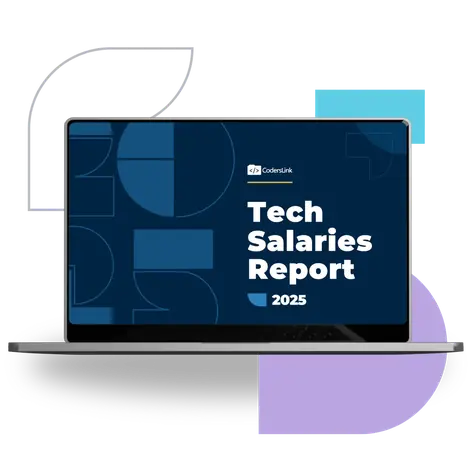It’s a scene playing out in tech companies everywhere. Your CEO, fresh from a conference and buzzing with talk of “10x productivity,” has just approved a generous engineering budget for next year. The message is clear: the business is investing in AI engineering, and expectations for what you’ll deliver are higher than ever.
At the same time, you’re having one-on-ones with your senior engineers. They’re tired. The push to accelerate the roadmap, coupled with the pressure to integrate new tools and processes, is taking a toll. You’re caught in the middle of a fundamental tension: the demand for unprecedented output and the very real human limits of your team.
If this sounds familiar, you’re not alone. The 2025 State of Engineering Management report, which surveyed over 600 engineering professionals, paints a clear picture of this new reality. Leaders are being handed more resources, but they’re also facing a perfect storm of rising expectations, technological disruption, and a looming burnout crisis.
Let’s break down the key trends shaping your world right now.
The AI Productivity Paradox: From Experiment to Expectation
Just a year ago, AI coding assistants were a novelty. Today, they are table stakes. A staggering 90% of engineering teams are now using AI coding tools like GitHub Copilot and Gemini Code Assist, a massive jump from 61% the previous year.
The results are tangible. Leaders report that these tools are driving real impact, with 62% seeing at least a 25% increase in developer velocity and productivity. This isn’t the 10x revolution some evangelists promised, but it’s a significant, measurable boost that helps teams focus more on new roadmap work and less on maintenance.
Herein lies the paradox. While engineers see AI as a powerful assistant, leadership often sees it as a silver bullet for hyper-growth. The productivity gains are real, but they’ve also reset the baseline. The new 25% increase in efficiency isn’t a bonus; it’s the new expectation. This creates immense pressure to not just maintain but constantly accelerate delivery, turning a helpful tool into another source of pressure.
The Budget-Expectation Squeeze
The investment in AI engineering is real. In 2025, 61% of companies increased their engineering budgets as a percentage of company revenue. This is a vote of confidence in technology as a core driver of business growth. However, this investment comes with strings attached.
With bigger budgets comes greater scrutiny and higher expectations for business outcomes. The conversation is no longer just about shipping features; it’s about the direct impact of engineering on the bottom line. Yet, there’s a disconnect. The same report found that only 20% of teams are using engineering metrics to formally measure the impact of their AI investments, creating a dangerous gap between spending and accountability.
As a leader, you are now tasked with translating that increased budget into quantifiable results, all while the goalposts for “high performance” are continuously moving.
The Human Cost: Burnout is on the Rise
This brings us to the most critical part of the equation: your people. The relentless pressure to do more, faster, is having a predictable and damaging effect. A full 46% of engineering managers expect rates of engineer burnout to increase in the coming year.
This isn’t just a feeling; it’s a strategic threat. High burnout leads to lower quality, missed deadlines, and, worst of all, the loss of your most valuable talent. You can’t simply push your existing team harder, even with AI tools. The cost of a bad hire or losing a key team member due to burnout can be devastating, impacting everything from project timelines to team morale. The challenge for modern engineering leaders is no longer just about managing projects and technology; it’s about creating a sustainable, high-performance environment that doesn’t sacrifice the well-being of the team.
Finding a Scalable, Sustainable Path Forward
So, how do you resolve this dilemma? How do you meet the aggressive demands of the business without breaking your team?
The answer lies in building flexibility and scalability into your talent strategy. The old model of relying solely on hiring full-time employees is often too slow and rigid to respond to today’s dynamic project needs. This is why a growing number of leaders are looking for more agile solutions. In fact, 45% of engineering managers anticipate that offshoring as a percentage of their engineering headcount will increase over the next year, specifically to add variable capacity without the commitment of adding more full-time headcount.
Strategic staff augmentation offers a way to surgically address this challenge. It allows you to:
Accelerate Key Projects: Bring in specialized, pre-vetted talent to hit a critical deadline without disrupting the focus of your core team.
Access Niche Skills: Fill immediate gaps for in-demand skills like AI/ML or specific cloud expertise that are difficult and time-consuming to hire for permanently.
Reduce Team Strain: Use flexible talent as a relief valve to manage workload peaks, protecting your full-time engineers from burnout and allowing them to focus on high-impact, long-term work.
The goal isn’t to replace your team, but to augment it intelligently. By building a flexible talent layer, you can create a more resilient and adaptable engineering organization, one that can scale up to meet intense demand and scale back down without the painful process of layoffs, all while protecting your most valuable asset: your people.


